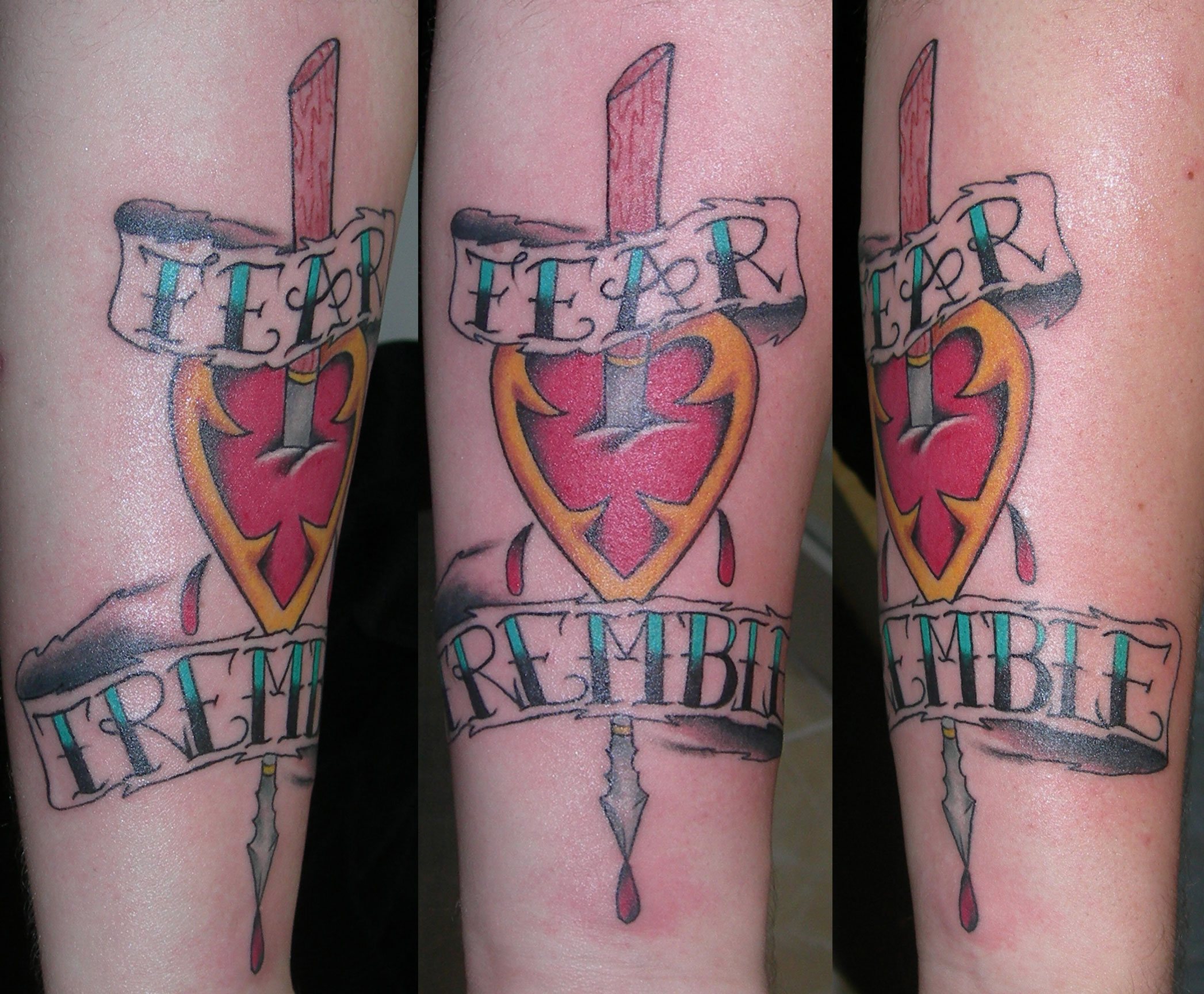

Jonah is a fairly complex character, all three of them are, I mean depending on the mood you’re in and how you watch it, any and all of them could be perceived as the hero, or the villain. I love reading scripts like that, where it makes me think and it’s something I’ve never read before. I thought the script was really interesting and unique. He sent me the script and said look at the character Jonah, or I think at first Elias was the character’s original name. Rob Grant and I had worked together on Knuckleball as well, but we had never really met because he was editing in Vancouver. Yeah, he sent me a script that was Rob Grant’s of course. You’ve worked with producer Mike Peterson before on Knuckleball, was it through him that you heard about the project? On the eve of the digital release we caught up with Munro to discuss the film, the importance of rehearsals, and the status of Turbo Kid 2.
Harpoon tattoo meaning tv#
The Arrow Video Channel is now available to UK customers of Apple TV channels in the Apple TV app on iPhone, iPad, Apple TV, and selected Samsung smart TVs, in addition to Amazon Prime Video subscribers. Fortunately, it’s now available digitally, the film premiering exclusively on Arrow Video’s Cult Film video-on-demand service the Arrow Video Channel, with a physical media release pencilled in for 2020. At it’s heart it’s a dark comedy with a unique brand of quirkiness, one that won’t quickly be forgotten. Directed by Rob Grant the film traverses several genres and keeps the viewer on their toes. In Harpoon Chambers stars as Jonah, one of three friends whose simple afternoon at sea becomes something much more terrifying after a sinister sequence of events. Last year he appeared in the very different Knuckleball, proving that he had a very dark side and this is something that he continues to further explore in Harpoon. The film which was a blood-splattered nostalgic eighties homage to films such as Mad Max took the genre world by storm and put Chambers on everyone’s radar.

“There’s a huge record of it in the Napoleonic Wars,” notes Matt, “because that's when the British Navy started recording people's bodies.Munro Chambers is best known to genre audiences for his turn as The Kid in the fantastic Turbo Kid. So why has the tattoo become so associated with maritime history? The simple answer is that sailor’s tattoos were recorded. So, it has a longer history than we imagined”. It’s an image linked to the 19 th century, but has actually been around for much longer, as Dr Matt Lodder, Senior Lecturer in Art History at the University of Essex and a specialist in the history of tattoos, explains: “The standard story is that sailors went to the Pacific, saw what was happening in Tahiti or New Zealand, and copied it, but tattooing’s happening before they even go. The stereotype of the tattooed sailor is a real image, with their arms decorated with pictures of anchors and hearts.

Perhaps the most recognisable seafarer’s art is the tattoo. “We call it naive art, or folk art, but some is sophisticated, some is quite basic, but I find it all fascinating.” “It’s the whaler in an idle moment”, says Jonny, who explores maritime artistic traditions in his work. “When a captain ordered his crew to be ‘scrimshandering’,” notes Robin, “he wanted them to be pre-occupied with a creative past-time mainly to kill time, to keep men occupied and out of trouble.” Burdett himself died at the age of 28 in 1833, having become caught in a harpoon line and dragged overboard.īut why “scrimshaw”? The origin of the term isn’t entirely clear, but likely linked to an old English word. Most scrimshaw artists are unknown, but this sperm whale tooth was decorated by Edward Burdett “One of the first known US scrimshaw artists and one of the best”, says Robin. Hull Museum’s “Phoenix Tooth” is a good example. Part of the lower jaw bone of a sperm whale with its teeth removed "A lot of scrimshaw is from the US, especially pieces made from the teeth of sperm whales"

Ink, sometimes soot, sometimes tobacco juice, was then rubbed onto the surface to fill in the carved lines, before the bone was wiped again leaving the black lines of the etching remaining. The surface was sanded down, often by rough shark skin, then an image could be engraved on its surface. First you needed a polished bone or tooth, plentiful on a whaling ship. For many this was simply a way to spend quiet time at sea, but skill still went into its making.


 0 kommentar(er)
0 kommentar(er)
